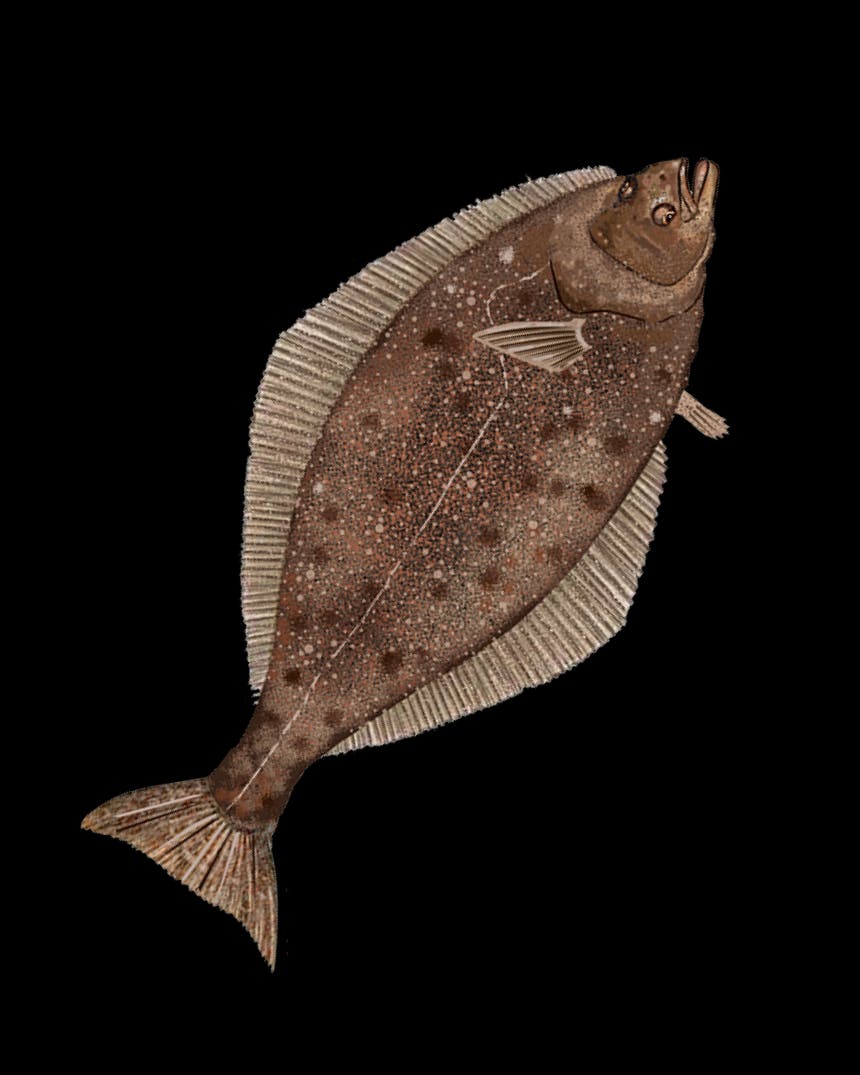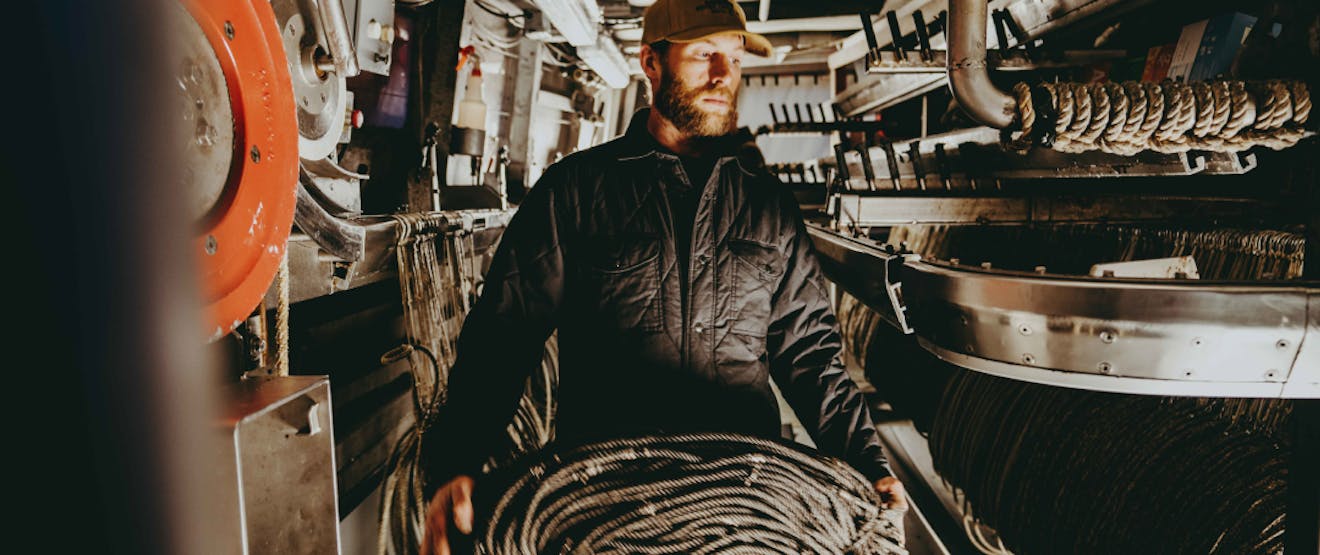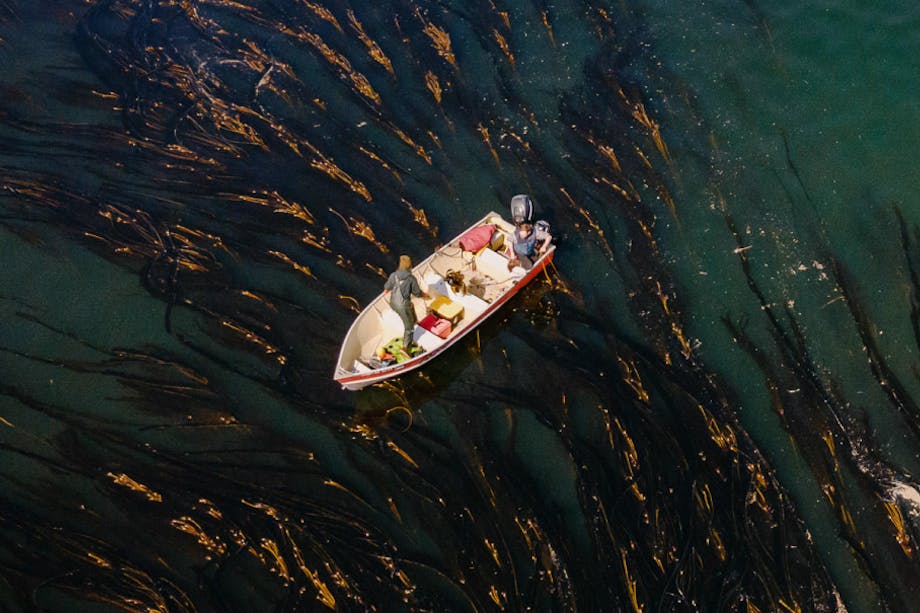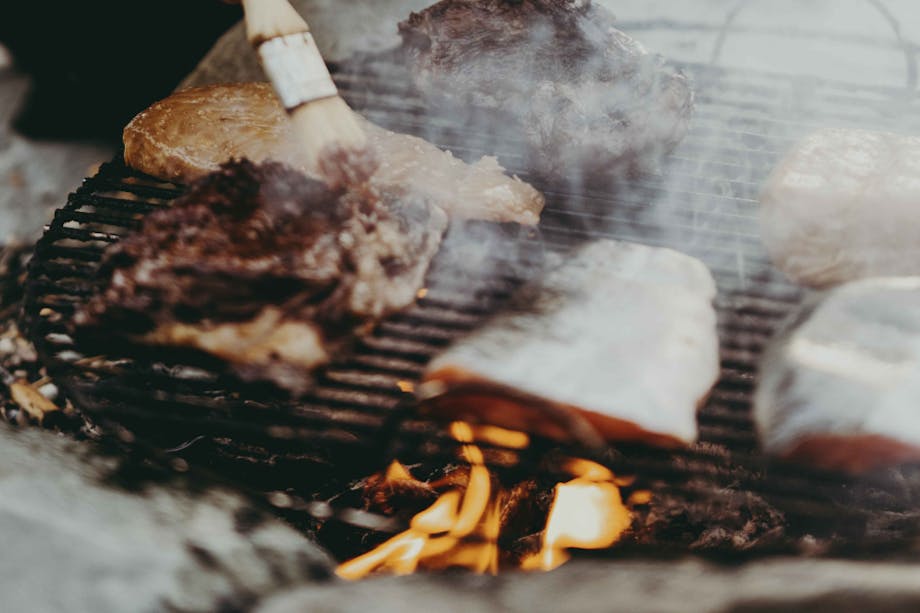Traditionally, a náxw, or “halibut hook” in the Lingít language, was carved out of two pieces of wood attached with cordage (natural fiber) to form a V-shaped hook. A piece of bone (later metal) would also be wrapped to the bottom piece of wood and angled towards the inside to create the barb. The upper piece of wood might be plain or carved, with a fishing line attached. The line would run to the surface, where it would be affixed to a wooden float or inflated buoy made of seal stomach, while the fishhook could be weighted at the bottom with a simple stone sinker. The finished assembly was designed to keep the hook near the ocean bottom, where large halibut feed.

A 200lb (90.72kg) Pacific halibut caught off the coast of Alaska in 1951.
Some liken the fishing with these sorts of hooks as akin to warfare, where the fishermen would challenge the halibut by saying “‘Jeendagút’… I’m coming down… going to fight with you folks.’”

A wooden halibut hook, hand-crafted by Tlingit Master carver Jon Rowan of Klawock, Alaska. The design is Mountain Goat transforming into Devil Fish (Octopus), featuring heavy-duty shamanic imagery. Rowan is one of the few carvers who use and test their creations in the field, regularly and successfully catching halibut with his designs—this work of art is built with purpose. Provided by: Jonathan Malindine, former curator of UC Santa Barbara’s Archaeological & Ethnographic Collections
Indigenous coastal fishermen made an early practice of ecology as part of their outlook on preserving Pacific halibut populations from year to year.
Like many tools and daily implements, the halibut hooks were made from materials available at hand: yellow cedar for the upper hook (one side more buoyant and attractively scented for the halibut) with a heavier wood like Pacific yew for the bottom of the hook. Cedar bark or spruce root served as the cordage material for the hook wrappings and leader, while bull kelp was employed for the long fishing line. A stone weight was also attached to the hook with a slipknot in the line, which led up to the float at the surface, while the barb of the hook was carved bone or metal. Octopus were reputed to be the best bait.

When deployed correctly, the hook would float up from the weight with its barb pointed down, and when a halibut was hooked, the slipknot would release the line from the stone weight, and allow the fisherman up top to see the movement of the float: a telltale sign that he had a “fish on.” Handmade, hand-wound, hand-carved; the halibut fishing hooks of the Northwest Coast Indigenous people have been made this way for centuries. Tribal cultures of British Columbia and Alaska—primarily Haida, Tlingit, and Kwakiutl—all relied on these hooks as part of their traditional fishing practices over generations. These have continued to this day, with hand-made wooden hooks for single-line fishing used alongside more modern multi-stainless steel hook lines.
One thing that has changed over time is the size of the wooden hooks. A study published in 2017 of hooks made between 1867 and 2015 examined the correlation between the overall length of the hook and the size of the halibut caught. Older hooks were discovered to have been made smaller, so that they would not catch juvenile or large spawning fish—only medium specimens, ranging between 20 and 100lbs (a full-sized fish could be up to 500lbs or more). In this way, native coastal fishermen made an early practice of ecology as part of their outlook on preserving Pacific halibut populations from year to year.

Not surprisingly, there was another reason for the growth in size of carved wooden halibut hooks. Many smaller hooks might have included a carved figure on the top portion of the hook. These became more elaborate as decorations on the larger-sized hooks, as commercial fishing gear became more widespread and more widely used. These larger hooks were artworks coveted by tribal family members and private art collectors alike, resulting in a “catch” of a different nature for the fishermen/artisans. Today, these beautifully carved and painted “halibut hooks” fetch thousands of dollars in local galleries, with examples found in many public and private collections, including the Sealaska Heritage Institute in Juneau, Alaska.

The decorative traditions are found in older versions of the halibut hook as well. An intricate example that was both functional and representative of the relationship between a fisherman and the halibut is seen in one hook dated to 1882 in the Smithsonian’s National Museum of Natural History. The hook, originating from the Tlingit tribe’s Xootsnoowú—“Fortress of the Brown Bears”—in Angoon, Alaska, shows a carved figure eating a halibut. Over 140 years old, both the fish hook and carving are remarkably good quality and a testimony to the craftsmanship of the original artist. The dual nature of the wooden halibut hooks of the Northwest Coast people is still treasured to this day.

Tlingit artist Arthur B. Nelson’s Devil Fish Halibut Hook, 2012, is an impressive example of a contemporary wooden halibut hook designed to be a piece of art rather than a functional example of halibut fishing equipment. The carving depicts raven, frog, octopus, and human spirits. Photo credit: Kathy Dye, courtesy of Sealaska Heritage Institute





